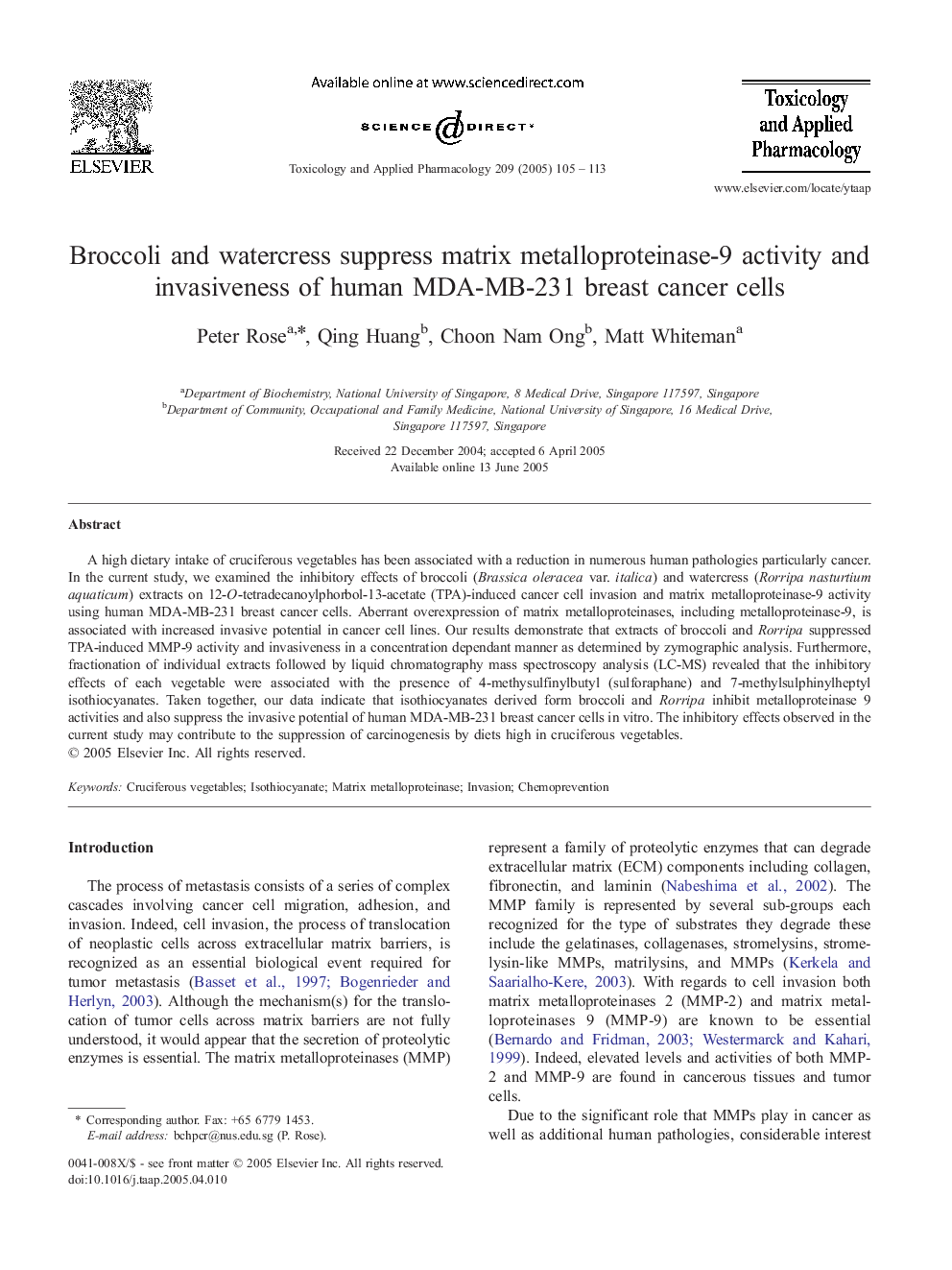| Article ID | Journal | Published Year | Pages | File Type |
|---|---|---|---|---|
| 9017914 | Toxicology and Applied Pharmacology | 2005 | 9 Pages |
Abstract
A high dietary intake of cruciferous vegetables has been associated with a reduction in numerous human pathologies particularly cancer. In the current study, we examined the inhibitory effects of broccoli (Brassica oleracea var. italica) and watercress (Rorripa nasturtium aquaticum) extracts on 12-O-tetradecanoylphorbol-13-acetate (TPA)-induced cancer cell invasion and matrix metalloproteinase-9 activity using human MDA-MB-231 breast cancer cells. Aberrant overexpression of matrix metalloproteinases, including metalloproteinase-9, is associated with increased invasive potential in cancer cell lines. Our results demonstrate that extracts of broccoli and Rorripa suppressed TPA-induced MMP-9 activity and invasiveness in a concentration dependant manner as determined by zymographic analysis. Furthermore, fractionation of individual extracts followed by liquid chromatography mass spectroscopy analysis (LC-MS) revealed that the inhibitory effects of each vegetable were associated with the presence of 4-methysulfinylbutyl (sulforaphane) and 7-methylsulphinylheptyl isothiocyanates. Taken together, our data indicate that isothiocyanates derived form broccoli and Rorripa inhibit metalloproteinase 9 activities and also suppress the invasive potential of human MDA-MB-231 breast cancer cells in vitro. The inhibitory effects observed in the current study may contribute to the suppression of carcinogenesis by diets high in cruciferous vegetables.
Related Topics
Life Sciences
Environmental Science
Health, Toxicology and Mutagenesis
Authors
Peter Rose, Qing Huang, Choon Nam Ong, Matt Whiteman,
